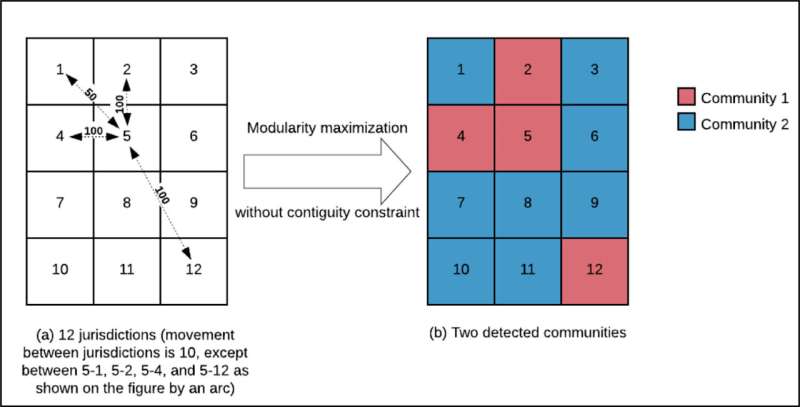
In a public health crisis such as the COVID-19 pandemic, imposing lockdowns across entire states or regions and enacting other sweeping policy measures aren’t practical because individual communities may be at different stages of an outbreak.
Instead, a “place-based approach,” in which policies are customized and coordinated across interconnected regions or zones, is a more effective response to an infectious disease than relying on local administrative boundaries, according to researchers at Florida Atlantic University.
Their study, published in the European Journal of Operational Research, identifies contiguous policy zones based on the natural movement of people to organize vaccination strategies and apply interventions such as lockdowns, masking and physical distancing. It is one of the first studies to use the movement of people to support developing effective pandemic policies in public health.
“Applying a broad and uniform policy across a state is not appropriate,” said Milad Baghersad, Ph.D., the lead author and an assistant professor in the Department of Information Technology and Operations Management (ITOM) within FAU’s College of Business. “We think our study will help policymakers understand benefits of movement-based coordination so they can craft better solutions in the future.”
Baghersad worked on the study with Mohsen Emadikhiav, Ph.D., C. Derrick Huang, Ph.D., and Ravi S. Behara, Ph.D., all ITOM professors at FAU.
In some cases, the consequences of non-coordination across state borders have been significant. For example, an influx of COVID-19 patients from western Idaho, where masks and vaccinations are not mandated, overwhelmed hospitals over the border in Washington, which has stringent policies in place. That deepened the crisis in Washington.
The model created by FAU researchers guarantees that coordinated communities are geographically contiguous and well-connected by people’s natural movement. It also allows for adjusting the number of jurisdictions assigned to a coordinated community, based on the preferences of policymakers.
The researchers tested their model within the bordering states of North Carolina and South Carolina, which together have 146 counties. They found that creating communities based on the natural movement of people is significantly better for coordinating pandemic-related policies than the existing administrative boundaries of state and county.
Source: Read Full Article


